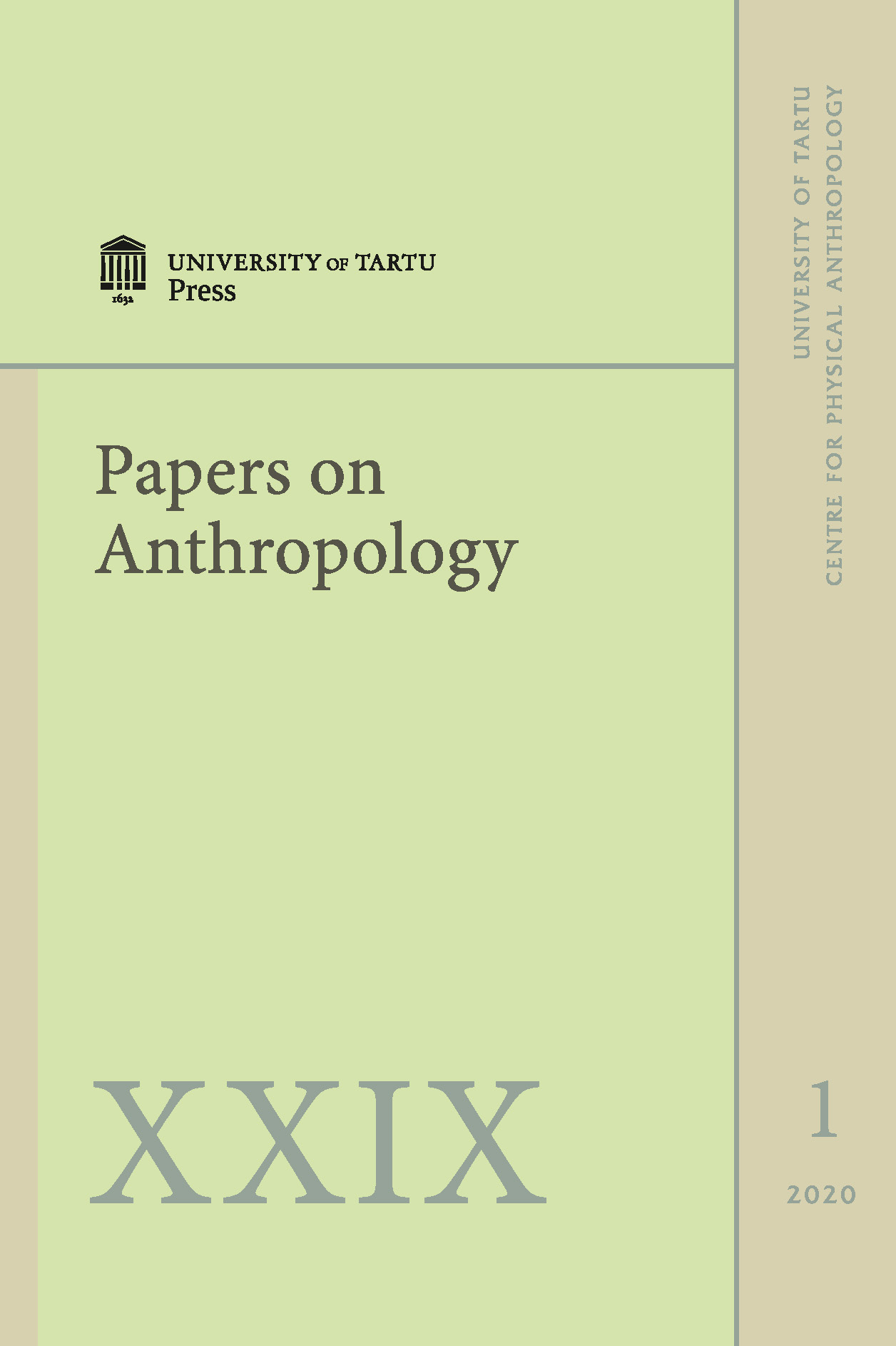Age-related variability of anthropometric indicators in urban school students – Belarusians and descendants of interethnic marriages
DOI:
https://doi.org/10.12697/poa.2020.29.1.05Keywords:
urban school students, Belarusians, descendants of interethnic marriages, physical development, somatotypesAbstract
In the 1990s – early 2000s, anthropometric indicators of school students of three age groups (8, 13 and 17 years) were studied in several cities of Belarus. In total 2088 students were examined. The material was distributed into sex and age cohorts taking into account the ethnic structure – Belarusians (both parents are Belarusians) and genetically more heterogeneous descendants of interethnic marriages (DIM) where one of the parents is Belarusian, and the other is Russian, Ukrainian or Polish (Slav).
In all sex and age samples, the number of students in Belarusians cohorts was almost twice higher than the number of DIM, which corresponds to their real proportion in the urban population of Belarus.
The sex and age dynamics of average values of body height and weight, body mass index (BMI) and chest circumference, as well as the distribution of body types (somatotypes) in groups of urban school students in Belarus were observed.
The differences between Belarusians and DIM in the studied anthropometric characteristics in all sex and age groups were insignificant. The phenomena of heterosis in the first generation of DIM were more clearly manifested only by the age of 17 among young men, who were 1.7 cm taller than their Belarusian peers, with correspondingly slightly higher values of body weight and chest circumference. In comparison with Belarusians, DIM girls of this age had a weak shift in all indicators of physical development towards lower average values.
The average values of the BMI, which increase during puberty, reflect the tendency of weakly expressed gracilization of the physique of the male and especially female body in DIM compared to their Belarusian peers.
The tendency to leptosomization (skeletal gracialization) and body asthenization was shown by the intragroup distribution of somatotypes among descendants of uninational marriages – Belarusians – and even more among DIM.
Intersex differences in morphogenesis during puberty were manifested in greater asthenization of the physique against the background of gracilization of the skeleton of the female body compared to the male.

